[G]host
Glass Host Project
Exploiting contemporary digitization technologies to serve the objectives of glass art crafts.
Join us
Cerfav
The initial desire is then to safeguard ancient know-how through intergenerational transmission.
THE MISSIONS
The Cerfav brings together technical, artistic and scientific skills around 4 missions.
INNOVATION – RESEARCH
TRANSFER OF TECHNOLOGY
CREATION
DEVELOPPEMENT
TRAINING
INNOVATION
RESEARCH
TRANSFER OF TECHNOLOGY
Developing scientific and technical expertise on industrial and artisanal processes
and the material glass.
DESIGN
Enhancing the value of
glass for the artist and the designer.
DEVELOPPEMENT
Save and optimize
the material and immaterial know-how of our craftsmen and craftswomen
and our master glassmakers.
TRAINING
Ensuring the continuity of these skills through lifelong training
of life.
THE ORGANIZATION
The Cerfav is an association
( law 1901 ) with more than 33 employees including chemical and material engineers and technical trainers. The Cerfav also missions all year round more than 30 external contributors.
(designers, artists, craftsmen, speakers, experts, etc.)
or consultants ).
A heritage to be safeguarded
Glassmaking traditions are threatened by a sharp decline in the transmission of their know-how to the younger generations and are encountering major difficulties in renewing the craft practices of the community of glass craftsmen.
The urgency for the Cerfav to rethink the means of safeguarding the intangible and tangible cultural heritage of glass at 21e century is currently based on a range of issues related to the social situation and the cultural and technological evolution in France.
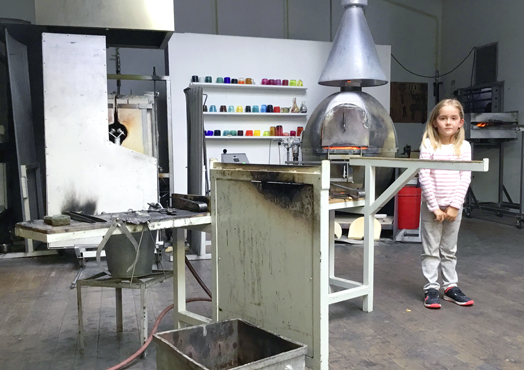
Constant aging
Currently, there is a growing cultural divide between the younger and older generations. There is an inexorable and very marked increase in the average age of practitioners, which no longer allows for the continuity of glassmaking practices and augurs for the future a transmission of know-how that is too limited to preserve the viability of glass craftsmanship.
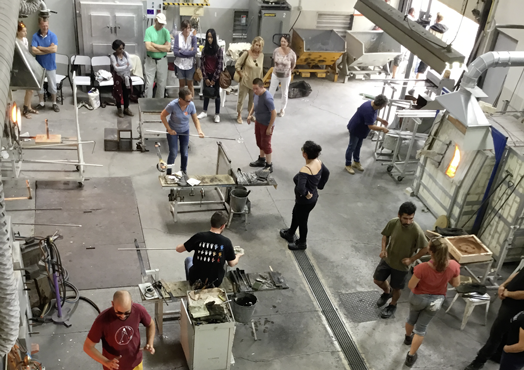
Long-term training
Training in the glass arts and crafts, as in many other arts and crafts, can appear to be laborious compared to more academic apprenticeships. Young people sometimes do not wish to be trained in these craft practices because of the necessary investment and the difficulties specific to glass training.
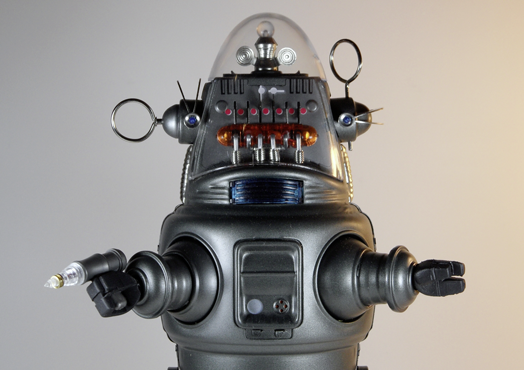
Cultural developments
and economic
Cultural and economic developments are nowadays influencing the crafts community massively and very rapidly. These profound changes are rapidly diminishing the opportunities for members of these communities to practice their intangible cultural heritage.
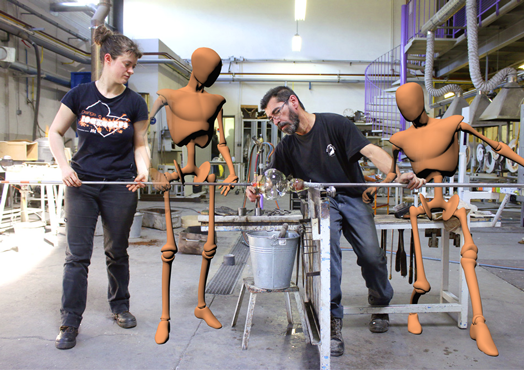
Ethics and new technologies
The development of modern capture processes (sound, movement, etc.) and their exploitation by algorithms are powerful tools for the safeguarding of tangible and intangible heritage, but they also represent a major problem when no ethical framework, with the agreement of the craft communities, governs their uses and applications.
Now
Don’t wait for disaster to strike to find solutions.
Glassblower, stained-glass maker, glass decorator, tailor, moulder/modeller, scientific glass maker. These are all “low value” jobs that are likely to be faced with a shortage of labour in the near future. With an average of 3 to 6 years of training and in many cases the creation of several masterpieces that usually require more than 10 years of experience, training in the arts and crafts seems unattractive and very rarely creates “manual” vocations.
This is why craft training structures must now rethink the tools and teaching methods offered to the younger generations by modifying their approach.
Making infinity with finish
“Thanks to the ability to train and learn with machines, humans have progressed. The human/computer combination remains unbeatable, far better than a computer or robot alone”.
– Stanislas Dehaene in “The Greatest History of Intelligence” –
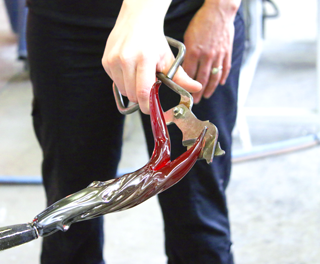
The chapter Learn project [G]host applies an active pedagogy that brings
to the learner of positive effects on cognitive development. Digital instrumentation of traditional tools and their connection to various feedback devices
(visual, sensitive, etc.) are a real training room that pushes him to look for, test and learn from his mistakes without experiencing the stress of the workshop or consuming precious resources. The tools being developed in the project pay particular attention to the essential ingredient that is the consolidation of skills acquired through training: they automate them so that they become fluid, fast and unconscious.
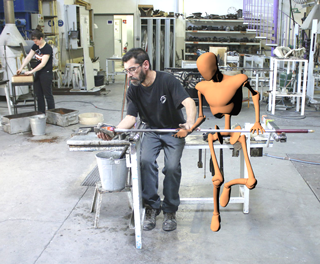
Homo ergaster augmented?
One of the objectives of the project is to make the use of new technologies of transversal reality autonomous, to inform the communities and to design tools adapted to the crafts in France and in the world by practicing an active watch and direct experimentation in the workshops. The project [G]host doesn’t stop where the practice of glass craftsmanship ends.
Indeed, the experimental field offered by the context of a glass workshop concentrates enough technical constraints and sociological questioning for the application of the research carried out around the project in fields other than that of the glass crafts.
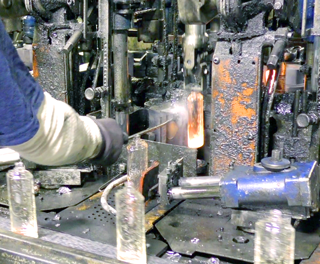
Manufacture
and industry
In any company, the cyclical movements of human resources make it necessary to envisage a serious policy of transmission of technical know-how. For this transmission to be effective, the company must identify, classify, model and transfer the important elements of expertise, those that will be of real interest to pass on to the new generations of employees. It is at the point of modeling fine gestures that the project [G]host can become a textbook case and transfer to companies the experience and technologies developed for glass crafts.
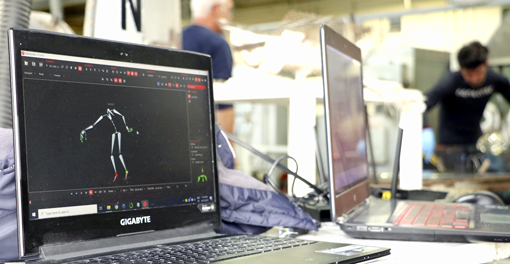
Ethics and personal data
Cross-cutting reality technologies1 nowadays, a wide variety of personal data can be captured. The areas of data capture are expanding exponentially to the extent that any hardware combining aspects of RA, MR and VR can potentially be used to capitalize on previously untapped data. Faced with the ethical challenges posed by these new data capture opportunities, the Cerfav has decided to accompany its own research on the capture of the intangible glass heritage with a constant dialogue with the Fondation Humanisme Numérique in order to disseminate good practices and use of the data collected to safeguard the intangible glass heritage.
1Transversal reality: any material combining aspects of augmented reality, mixed reality and virtual reality.
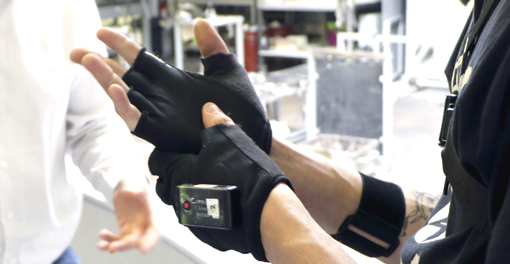
Ergonomic assessment
Le chapitre Accompagne de [G]host aims to make use of the amount of data on gestures and postures captured by the devices and methodologies put in place for the safeguarding of tangible and intangible heritage, to establish capacities to care for others. This concrete activity will initially take the form of the design and development of applications for the ergonomic evaluation of workstations in workshops, industries or glass factories.
At the centre, the human being
[G]host is an ecosystem that uses XR technologies to facilitate and preserve the sensitive interpersonal relationship between an expert and a learner for the transmission of know-how.
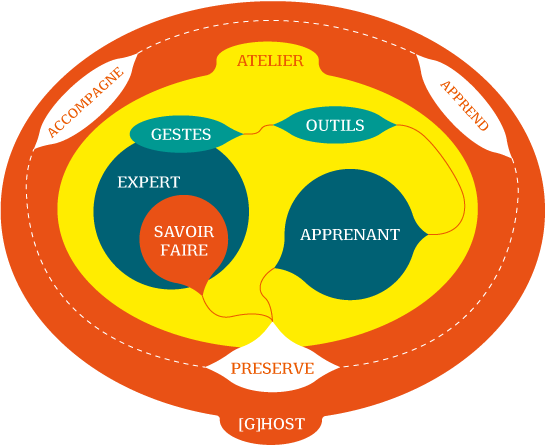
The [G]host project is divided into three distinct parts that revolve around places of training and transmission of know-how. The model represented by [G]host is not exclusive to the glass industry and could potentially be deployed in the context of other crafts, manufactures or industries.
PRESERVE
Art & craft mocap
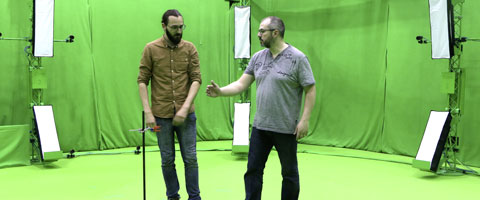
This database will be accessible through a manager allowing remote viewing of the digitized knowledge and know-how. The elements of the stored data will have to be tagged in order to perform semantic searches.
Preserves will mainly include data from the engineering sciences (dynamic 3d model, point cloud, position in space, acceleration, pressure, heat, etc.). ), but also from the human sciences & social (historical work, images, metadata, inventory etc.)
The singularity of the knowledge container Preserves lies in its interoperability with the different data formats as well as with the two other modules of the project. [G]host : Learn and Accompanies.
LEARN
Transversal pedagogy
The second module, Learncontains a catalogue of applications intended for training or revision of the fundamentals of the gestures that have been digitized by experts in the glass industry (glass-blowing with a cane, scientific glass-making with a torch, stained-glass windows, modelling and glass-paste casting, engraving, etc.) the applications in the catalogue. Learn will draw their resources (optimized 3d models for example) from the knowledge container Preserves.
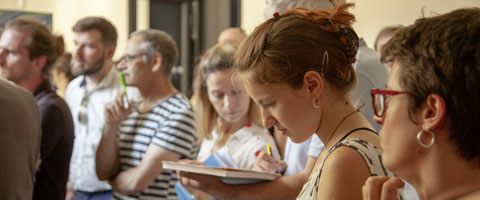
The approach of Cerfav in this field consists in considering that the gesture of an expert in the crafts cannot and must not be transmitted by a fully autonomous digital expert system, for many reasons, notably the poor quality of the restitution of the expert gesture by these systems which are not capable of integrating the notions of intuition which are very numerous for the mastery of skill in the crafts.
Moreover, these systems replace the physical expert/learner encounter, thus maintaining the break in the intergenerational transmission of know-how.
ACCOMPANY
The ethics of care
The last module of the ecosystem [G]host proposes to include applications immediately inspired by the ethics of care, which invites us to give attention and care beyond the usual fields of health care.
The tools developed will be concrete applications of XR technologies in a professional environment in order to optimize and improve ergonomic evaluations of workstations or to support experts and learners in the laborious tasks of their jobs.
At heart territorial
Experimentation, invention
and enhancement of the premises
Stretching from the cereal-growing plains of the Paris basin to the borders of the Rhine, from the Ardennes massif to the Langres plateau and the foothills of the Jura, the new region formed by the Alsace-Champagne-Ardenne-Lorraine complex has always been an economic, human and cultural link between France and continental Europe, while it is positioned on a strategic European corridor between the North Sea and the Mediterranean arc.
This interface position makes the Greater East a particularly open space for European and international trade and markets.
Source :
SRADDET Report – December 2018 – Far East Region
Address
Cerfav | Vannes-le-Châtel
Rue de la liberté
54112 – Vannes-le-Châtel
Give us a call
(+33) 03 83 25 49 93
david.arnaud@cerfav.fr